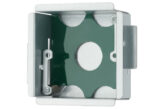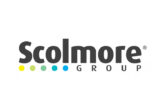
Click Scolmore looks at considerations to bear in mind for the selection and erection of electrical accessories in those locations that are subject to mechanical impact.
Any electrical equipment must be both fit for use (133.1.1), suitable for the location in which it is to be installed (132.5.1), and installed in accordance with the manufacturer’s instructions (134.1.1) and erected such that it is not compromised (134.1.2).
IK codes
BS EN 62262: 2002+A1:2021 Degrees of protection provided by enclosures for electrical equipment against external mechanical impacts (IK code), is a standard which ‘…refers to the classification of the degrees of protection provided by enclosures against external mechanical impacts…’
Table 1 in this standard details the codes for the impact energy (in joules) that the equipment is capable of withstanding.

Whilst Appendix 5 of BS 7671 doesn’t reference IK codes (it references ‘low’, ‘medium’ and ‘high’ severity of impact), there are a number of regulations within the standard which make specific references to BS EN 62262, including for example, Regulation 708.512.2.1.3, 709.512.2.1.4, and 712.512.
Design considerations
When designing an installation, it’s important that the designer gives careful thought to the nature of the activity and conditions likely to be found in the installation.
Where there is a likelihood of a risk of impact designers, amongst other things, should select products capable of withstanding such impact. Whilst there are only a few regulations detailing specific parts of an installation requiring a minimum energy withstand (IK code), there is a more general need to ensure that any installed equipment is suitable.

Installation
There is a duty on installers to ensure that they install any equipment in accordance with the guidance issued by the manufacturers of a product. More than this however, they should also ensure that their activities do not compromise the product itself, which can be caused by excessive force, incorrect location, poor fixing and the like.
Examples
Consider the following cases:
a) A campsite has supplies available for various tent plots. Regulation 708.512.2.1.3 is very clear, and because of the increased risks associated with persons being in contact with Earth, installed equipment must have a minimum resistance to impact of IK08 (5 J).
b) A small industrial unit has a series of wall-mounted, surface wired accessories. In this instance there is no minimum declared IK value, however the general principles apply; that is to take account of the environmental conditions which apply. As such, a designer would likely select metallic outlets.
Conclusion
It is important that both designers and installers take due account of the likelihood of impact when selecting and installing suitable products for those installations which have a harsher environment. Additionally, certain special locations detail specific minimum impact requirements.
Scolmore’s comprehensive Metal Clad range is offered as part of Click’s Essentials wiring accessories and features electrophoretically coated plates and back boxes that provide a durable and long-lasting heavy-duty finish. All Metal Clad socket outlets and spurs are tested and approved to BS 1363.
Browse the Click Scolmore Metal Clad range of products here
Find more industry technical articles here








